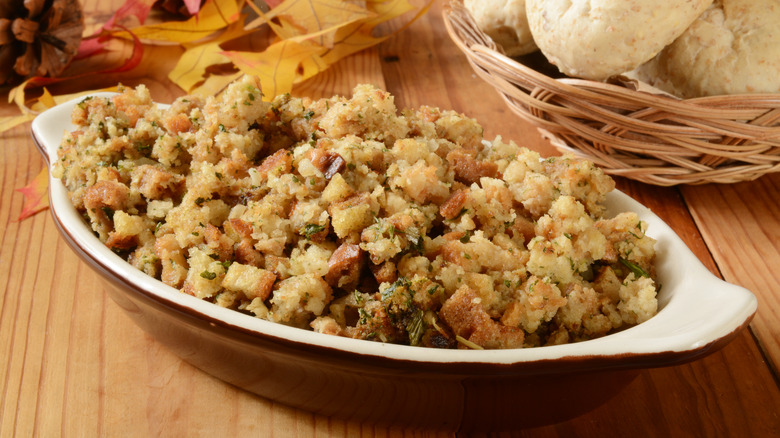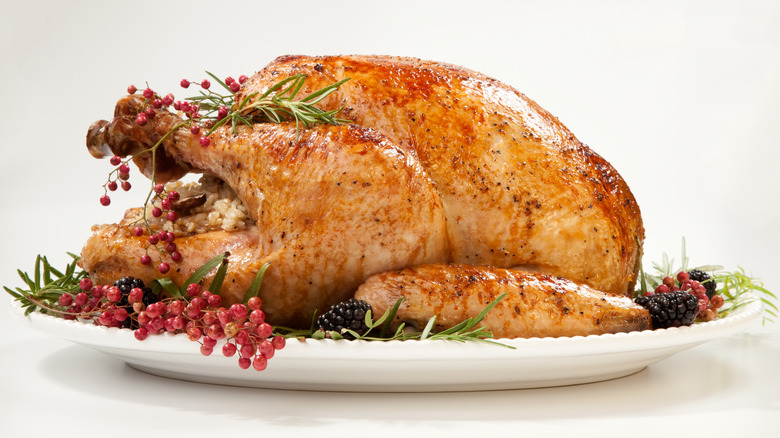Classic Thanksgiving Stuffing Probably Got Its Start In Ancient Rome
On Thanksgiving, there's pretty much nothing more classic than stuffing ... except for the turkey your stuffing is (theoretically) stuffing, of course. Unfortunately, that idea sort of falls apart upon closer examination. Stuffing isn't just one thing, after all. There are countless stuffing recipes out there. As noted by Slate, the stuffing used in American Thanksgiving can include just about anything, such as the traditional bread and rice, as well as bacon, chiles, mushrooms, nuts, oysters, potatoes, raisins, sausages, tamales, and more. People can't even agree on stuffing's true name! Is it "stuffing" or "dressing," or as the Washington Post suggests, is it "filling?" Should we actually bake it inside the turkey or is that just an outdated concept?
Stuffing's versatility makes it hard to pin down. The true origins of Thanksgiving are similarly nebulous. As WaPo reports, the idea that pilgrims and Native Americans celebrated the first Thanksgiving in the 1600s was a narrative created during the 1800s. The 1621 Plymouth Plantation feast was retroactively cherry-picked out of history to support the push for Thanksgiving to become a national holiday. Plus, as Slate notes, bread back then would have been corn-based, unlike traditional stuffing nowadays. Yet, it is technically possible that somebody stuffed bread inside of a cooked bird. We just don't know for sure.
If stuffing isn't necessarily "American," though, then where did it come from?
Stuffing appeared in many Roman recipes
The answer lies further back in time, in the ancient past. Per Arcadia Publishing, the first record of stuffing comes from Rome. Specifically, the Roman recipe book "Apicius de re Coquinaria," from the first century A.D., documents stuffing's early uses. Romans combined herbs, spices, and veggies with spelt (an ancient grain) and put that inside chickens, pigs, and rabbits. They also dressed seafood like sardines and squid (via Slate). To celebrate holidays, they filled rodents called dormice. The cookbook's author even went so far as to put little birds inside of suckling pigs.
Could stuffing have originated before it was written down? According to the Wall Street Journal, there's a 3,700-year-old clay tablet from ancient Iraq that shows chicken recipes alongside flavored bread. That bread was merely a side dish, like many present-day stuffings, but the Journal hypothesizes this was the dish's oldest ancestor.
How did we get from then to now? Per Arcadia and WSJ, stuffing endured two millennia while going by various names, such as cockentrice, farce, and forcemeat. Europeans, especially the French, per Slate, kept the tradition alive for centuries, and eventually, their practices were brought across the sea.
In North America, stuffing became widespread thanks to inventions like boxed stuffing, which made the stuff easier to prepare, as noted by WaPo. So, if you end up prepping one of those modern stuffings this upcoming Thanksgiving, rest assured, it's actually a time-honored tradition dating back not just to the "first Thanksgiving," but to Rome itself!

